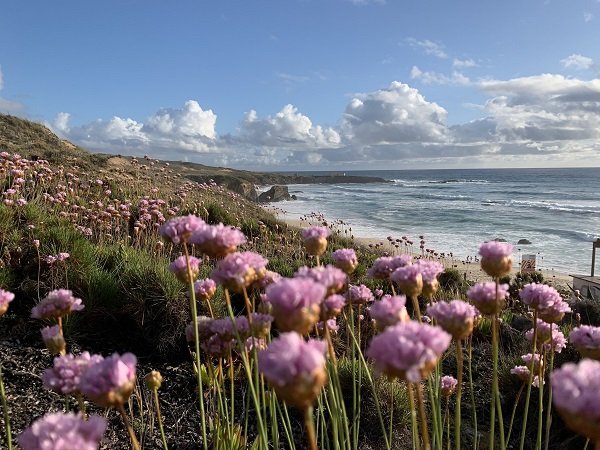Comporta
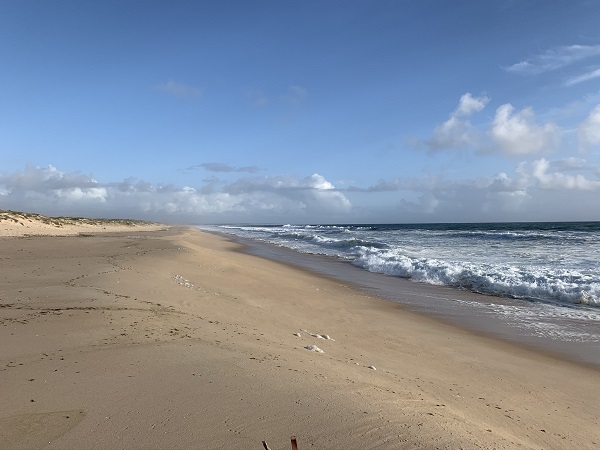

One of Portugal's not-so-secret secrets, quaint Comporta kicks off the northern end of the Costa Vicentina with a postcard-perfect bang. This hippie-chic Alentejo village is on speed dial of trendsetting Eurostars such as Jacques Grange, Christian Louboutin and Philippe Star, among others, and is easily reachable via a 90-minute drive from Lisbon. While located on the Tróia Peninsula, a 15-mile sun-toasted sandbox sandwiched between the Atlantic Ocean and the Sado River estuary, it feels like worlds away. Remarkable white-sand beaches - Tróia, Pego, Soltroia, Carvalhal as well as the town beach — are backed by cork trees, sand dunes, rice fields and vineyards. The town itself is small but rife with excellent restaurants and hip bars and there is epic horseback riding on the sands on offer from Cavalos na Areia. It's a self-contained paradise for those looking for a discreet sojourn in the sun.
Vila Nova de Milfontes
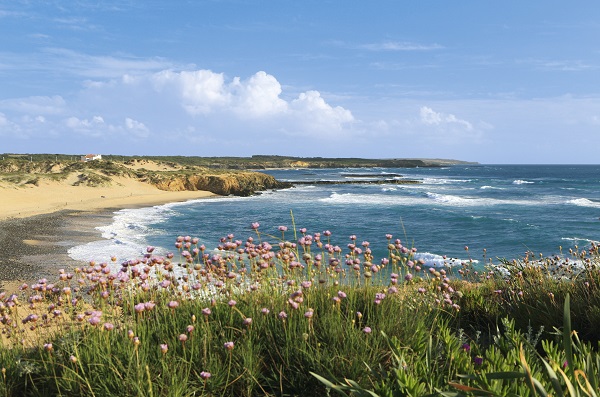

Another small but absolutely idyllic village we are in love with, Vila Nova de Milfontes is everything that's wonderful about coastal Alentejo. The laidback town, the biggest of those in this article (clocking in at a whopping 5,000+), is home to a small handful of excellent eateries (start with Tasca do Celso, then head above town to Porto das Barcas). Outside town the golden goodness unfolds in all directions - Praia das Furnas and Praia da Franquia in town and Praia do Malhão and Praia de Almograve further afield north and south, respectively. Located just under 200 km south of Lisbon, it's an easy getaway from the capital, but the beaches feel as remote and natural as far more flung destinations. With a historic lighthouse, a 16th century fortress and a town cathedral, there are a few cultural attractions to seek out amongst the sunscreen and sand castles, too.
Porto Côvo
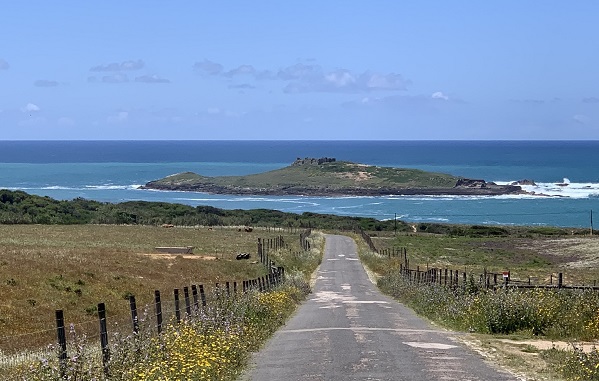

Seemingly straight off a postcard and quickly emblazoned across your heart on first sight, the archetypal traditional Portuguese fishing village of Porto Côvo, 18 km south of Sines, is a thing of stuck-in-time beauty. Cobbled streets and blue-trimmed, whitewashed cottages unravel in a photogenic grid toward the fishing harbor — a surefire sign of Porto Côvo's seafaring past (the name means "fishing net port."). Praça Marquês de Pombal, the main square, evokes downtown Lisbon's Pombaline architecture, helping earn the small village it's "Lisbon-on-Sea" nickname. On the north end of town, the idyllic Praia Grande ("Big Beach") is a picturesque patch of sunburnt sands bound by natural rock formations; and there's more of that where it came from (try Praia da Samoqueira to the north as well). It's a family friendly, intensely beautiful base for living out the Alentejo summer of your dreams.
Zambujeira do Mar
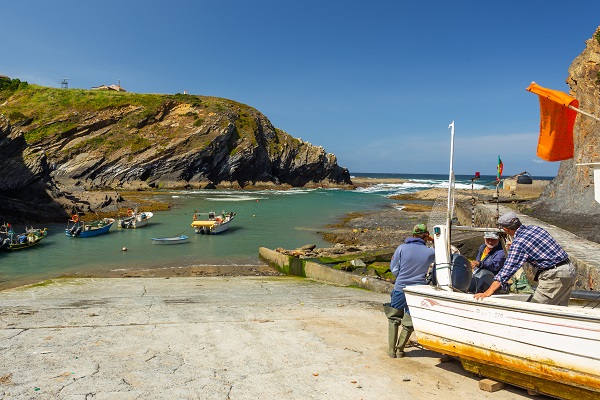

Perched above rugged cliffs on the southern end of the southern Alentejo sands, Zambujeira do Mar is one of the jewels of the Costa Vicentina. The town's namesake beach, a sort of golden nest of sun and sand below the before-mentioned cliffs, is sun-kissed jawdropper that ticks all the boxes: Cerulean seas, rocky cliffs, floury sands. The village itself, an arsenal of whitewashed houses topped with coordinated rust-orange rooftops, sits above as if a guardian to the seas. Its central location in the middle of Parque Natural do Sudoeste Alentejano e Costa Vicentina make it a natural base for exploring numerous beaches in the park, including Porto Covo, Malhão, Vila Nova de Milfontes and Almograve in the Alentejo as well as the wonderful sands at Monte Clérigo, Arrifana and Praia do Amado on the Algarve side of the park. To eat? One of the most famous spots on this coast, A Barca Tranquitanas, where the owner's father used to feed returning fisherman.
*Kevin Raub is an Italy-based travel journalist and Lonely Planet Author from Atlanta and started his career in entertainment in New York, working for Men's Journal and Rolling Stone magazines.
